We touch fabric every day – pulling on a favorite tee, folding laundry, choosing something that feels just right on our skin.
But few of us pause to notice what those tiny labels are telling us.
Learning to read fabric labels is a small but powerful way to shop (and dress) with more intention.
When you start to recognize those fibers – cotton, linen, wool – you begin to see patterns and make choices that simply feel better.
Once you can spot polyester and its many aliases, you gain control over what touches your skin and fills your closet.
It’s a skill rooted in awareness, comfort, and care – practical knowledge that brings everyday confidence.
What Fabric Labels Really Tell You
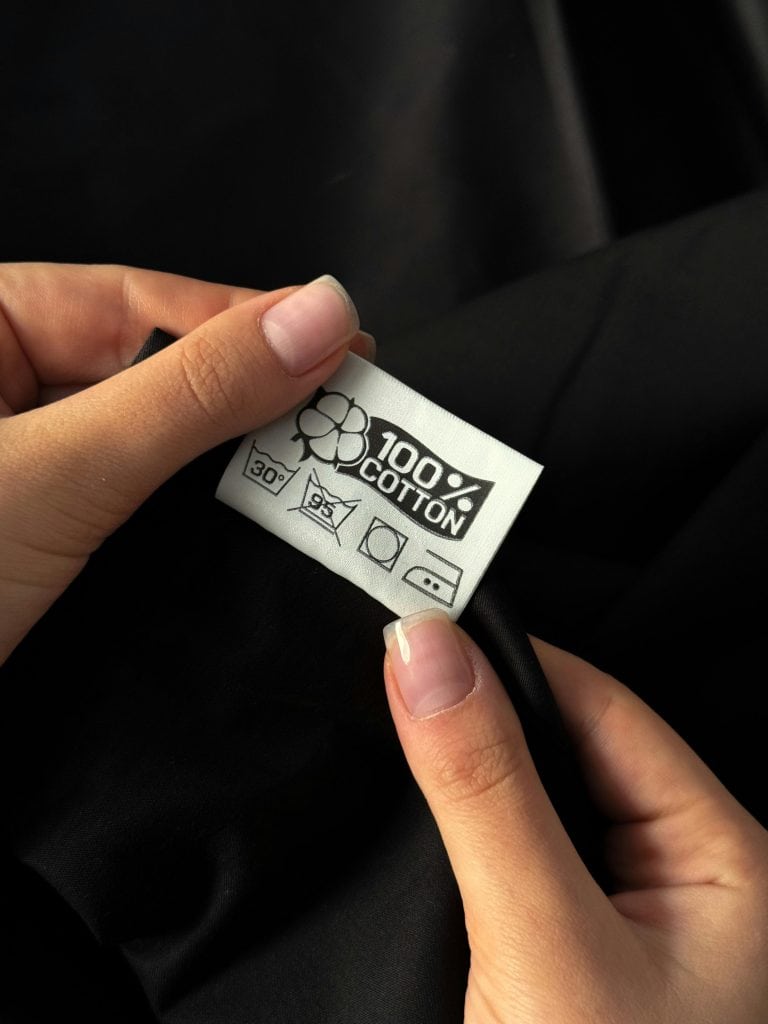
A fabric label explains what the garment is made of, where it came from, and how to care for it so it lasts.
Once you learn to read it, you can choose clothes that support comfort, longevity, and ease – without guessing.
The fiber content tells you what’s woven into the fabric. A label that reads 100% cotton means every thread is natural, breathable, and soft.
A blend like 60% cotton, 40% polyester means the garment mixes natural and synthetic fibers. These numbers matter – they affect how a piece feels on your skin, how it drapes, and how it holds up over time.
The country of origin reveals where the garment was made. This detail gives a sense of its craftsmanship and sometimes even the production standards used. It’s one small clue that helps you shop with awareness.
Finally, the care instructions show how to help your clothes last. Some fibers prefer gentle washing, others handle heat or drying differently. Following those few symbols or lines of text can make a garment last years longer.
When you start reading labels this way, you stop rushing through racks – you pause, notice, and understand.
Common Fabric Types and What They Mean
Every fabric has its own character.
When you understand what each one offers, you can choose materials that match your lifestyle, your comfort, and your values.
Reading a label becomes easier when you know how these fibers behave and what they bring to everyday wear.
Cotton
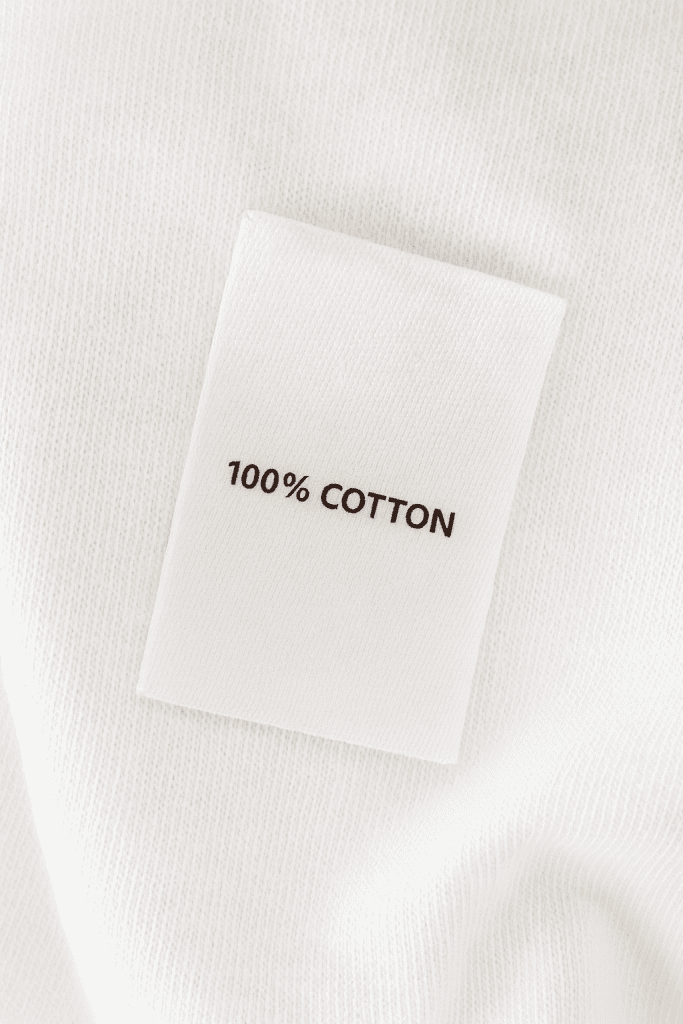
Cotton is a familiar friend in most wardrobes.
It’s soft, breathable, and naturally absorbent, which means it helps regulate body temperature throughout the day.
A well-made cotton shirt can handle regular washing and still feel comfortable years later.
Look for organic or combed cotton when possible – these varieties often have smoother fibers and a sturdier weave.
Cotton wrinkles easily, but that’s part of its honest nature – it shows real texture, not plastic perfection.
Linen

Linen is woven from flax fibers, known for their natural strength and cool touch.
It feels crisp at first, then gradually softens with each wash, becoming supple without losing integrity.
Linen breathes beautifully, moving heat and moisture away from the skin.
It’s a material that thrives on wear – it looks best when lived in.
When you see 100% linen on a label, you can expect comfort and structure that improve over time.
If you’re planning to sew with it, check out how to choose, pre-wash, cut & press linen fabric for a quick guide before starting your project.
Wool
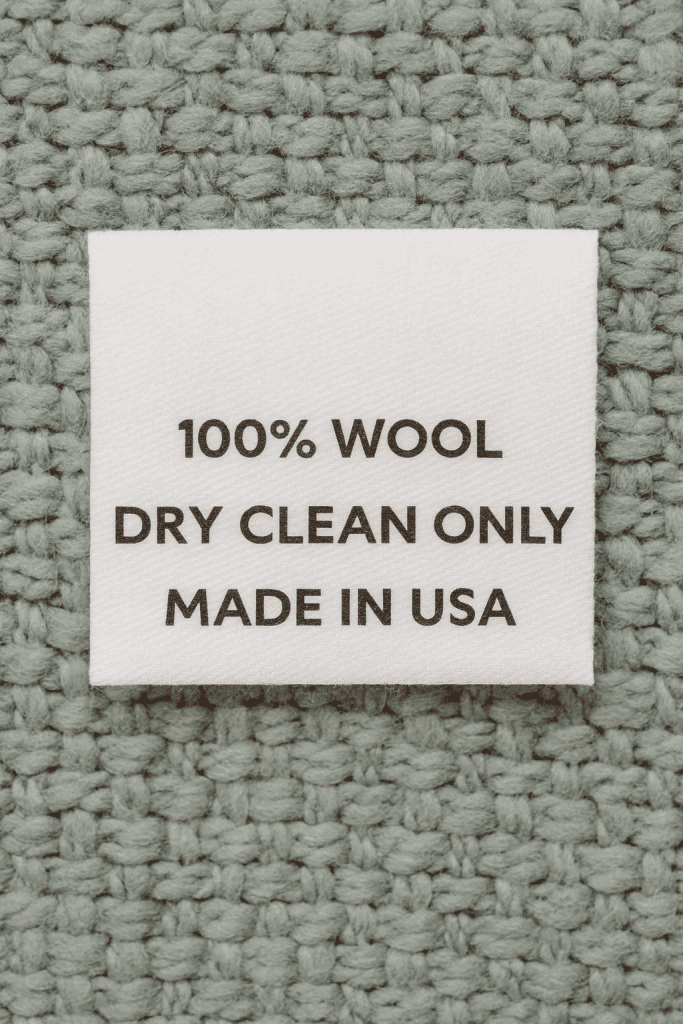
Wool is nature’s performance fiber.
It keeps warmth in without overheating, resists odor naturally, and even repels water to a degree.
Fine varieties like merino are soft enough for direct contact with skin, while thicker weaves are ideal for outerwear.
Wool fibers bend and recover easily, so garments made from them maintain their shape well.
When cared for properly – gentle wash, low heat – it can last for decades.
For sewing tips, see choosing, pre-washing, cutting & pressing wool fabric to help you handle wool with care.
Silk
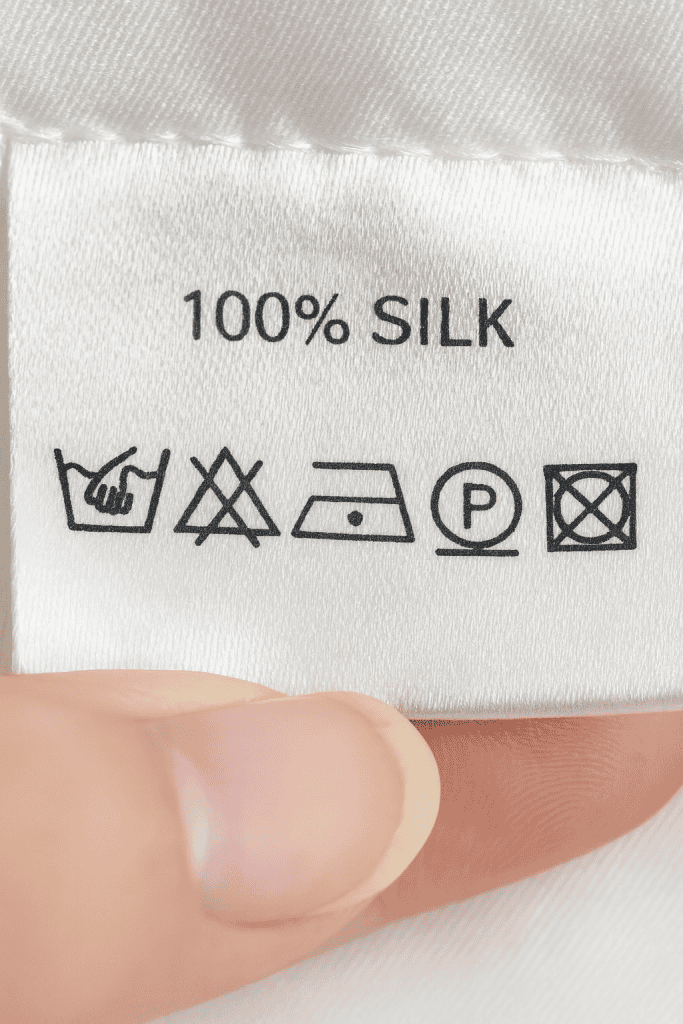
Silk is a natural protein fiber made by silkworms.
It’s smooth, temperature-regulating, and surprisingly strong.
It drapes close to the body, creating a natural flow without heaviness.
Silk breathes well and adapts to different climates, making it a timeless fabric for layering.
When you see mulberry silk or charmeuse on a tag, it usually signals quality and care in production.
Hemp

Hemp is one of the most sustainable and resilient natural fibers available.
It grows quickly, requires little water, and creates fabric that’s both durable and breathable.
Hemp garments often start out with a textured feel that softens beautifully over time.
It resists UV light, holds color well, and feels grounded (literally) because it connects you to materials that come directly from the soil.
Viscose (Rayon)
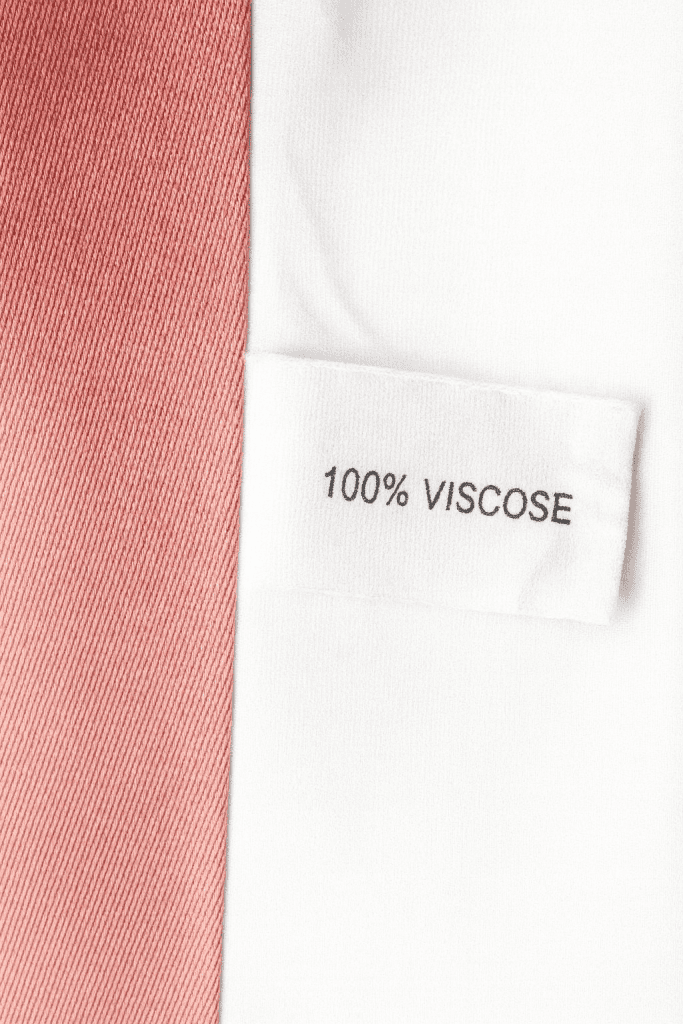
Viscose is a semi-synthetic fiber made from purified plant cellulose, often derived from wood pulp.
It’s processed, but its foundation is natural. It offers a soft, silky drape and blends easily with cotton or linen to create flexible, comfortable garments.
While not as strong as other fibers when wet, viscose adds lightness and flow to clothing without the slick texture of synthetic fibers.
Each of these fabrics has a place in a natural, thoughtful wardrobe.
When you learn their strengths, you begin to see how clothing can support you – not just in style, but in how it feels and performs each day.
Understanding Polyester in Clothing
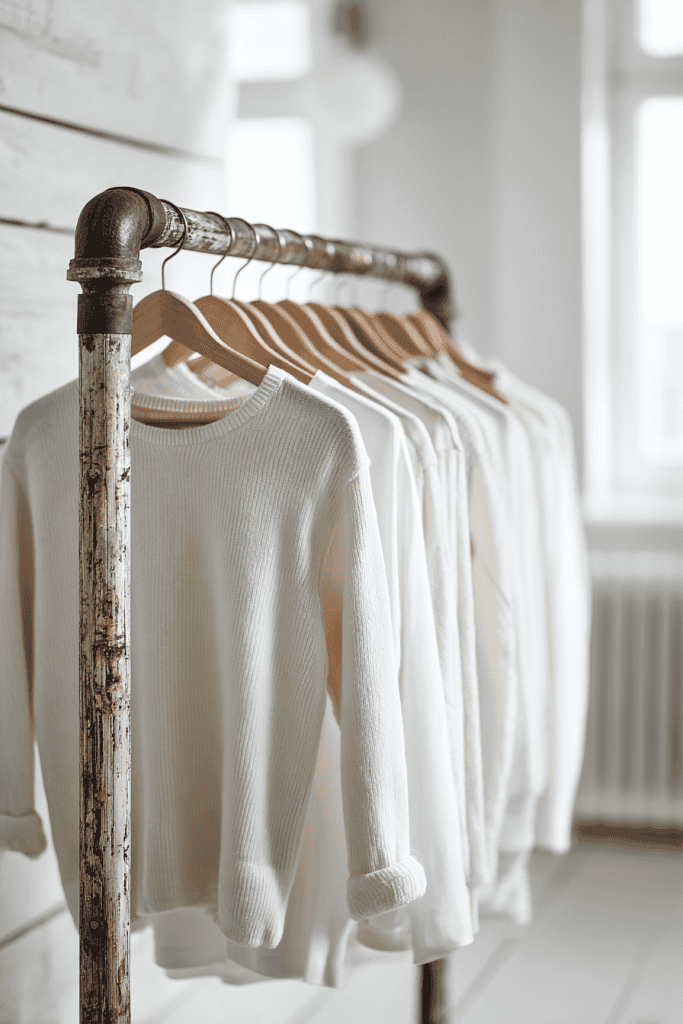
Polyester shows up on many clothing labels, often alongside natural fibers.
It’s a synthetic material made from petroleum, designed for strength, stretch, and wrinkle resistance. Because it’s affordable and easy to produce, it became a mainstay in modern fashion – especially in fast, high-volume manufacturing.
What makes polyester appealing in production is its consistency.
Every fiber is identical, so fabric mills can create precise colors, textures, and finishes that last through frequent washing. It’s durable, lightweight, and resistant to shrinking – qualities that serve a purpose, especially in items like activewear or outerwear.
But when it comes to comfort and breathability, polyester behaves differently from natural fibers. It doesn’t allow air to circulate as freely, and it tends to hold warmth and moisture close to the body. Over time, this can make polyester garments feel less fresh than cotton, linen, or hemp.
Polyester is also versatile – it’s often blended with natural fibers to reduce cost or add elasticity. A shirt labeled 60% cotton, 40% polyester will feel smoother and wrinkle less than pure cotton, but it may not breathe as well.
Recognizing these blends helps you make choices that balance function with comfort.
Once you understand what it offers, you can decide where it belongs in your wardrobe and where you might prefer something more natural.
How to Identify Polyester on Clothing Labels
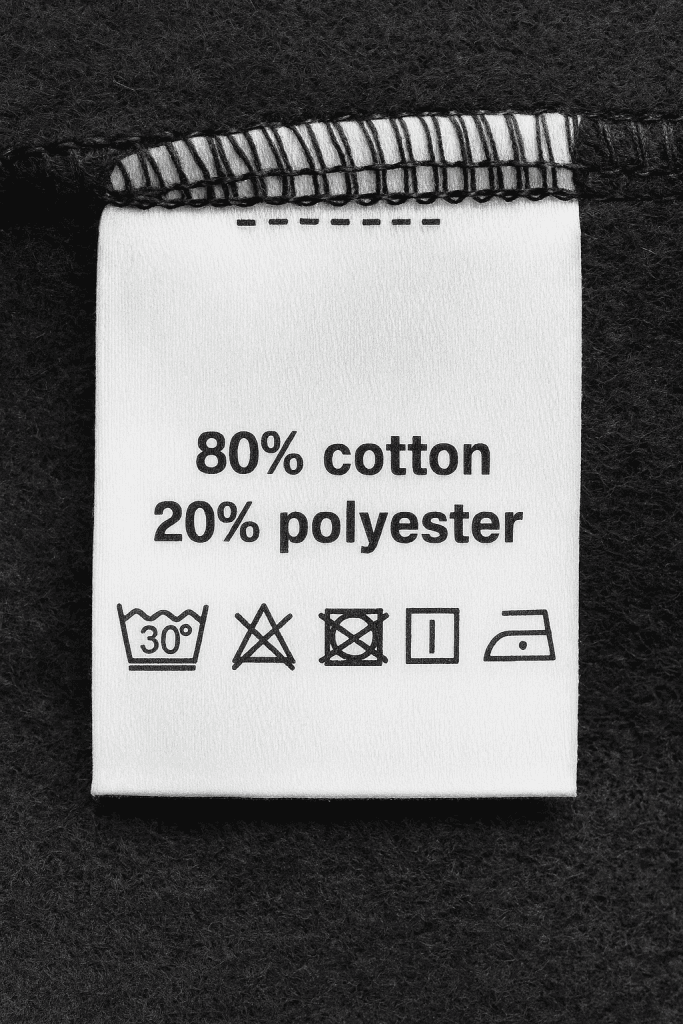
Once you know what to look for, spotting polyester becomes simple.
Labels list fibers in order of their percentage, and that’s where the clues begin.
Polyester often appears by name, but it can also hide within blends or under technical trade names.
Reading carefully (without rushing) helps you make informed, confident choices.
- Start with the fiber list. If you see polyester, nylon, acrylic, or spandex (also called elastane), the garment contains synthetic material. These fibers are often added for stretch, sheen, or structure. For example, a tag that reads 95% cotton, 5% spandex means the piece will hold its shape better but feel slightly less breathable.
- Next, notice the blend ratios. The first fiber listed is usually the main component. A shirt labeled 80% cotton, 20% polyester will behave mostly like cotton but may feel a little smoother and resist wrinkles. The higher the percentage of natural fiber, the closer the fabric will feel to pure, breathable comfort.
- The texture and feel of the fabric also tell you a lot. Polyester tends to feel slick, uniform, or slightly cool to the touch, while natural fibers have subtle irregularities – softness, texture, and variation that feel alive. Over time, you’ll begin to recognize these qualities without even checking the tag.
- Finally, the care instructions can offer a hint. If a garment calls for “cool wash” or “avoid high heat,” it likely contains synthetic fibers that could lose shape or sheen under heat.
The more familiar you become with fiber names, blends, and textures, the easier it becomes to choose clothing that fits your comfort, values, and way of life.
Choosing Natural Fabrics Instead of Polyester
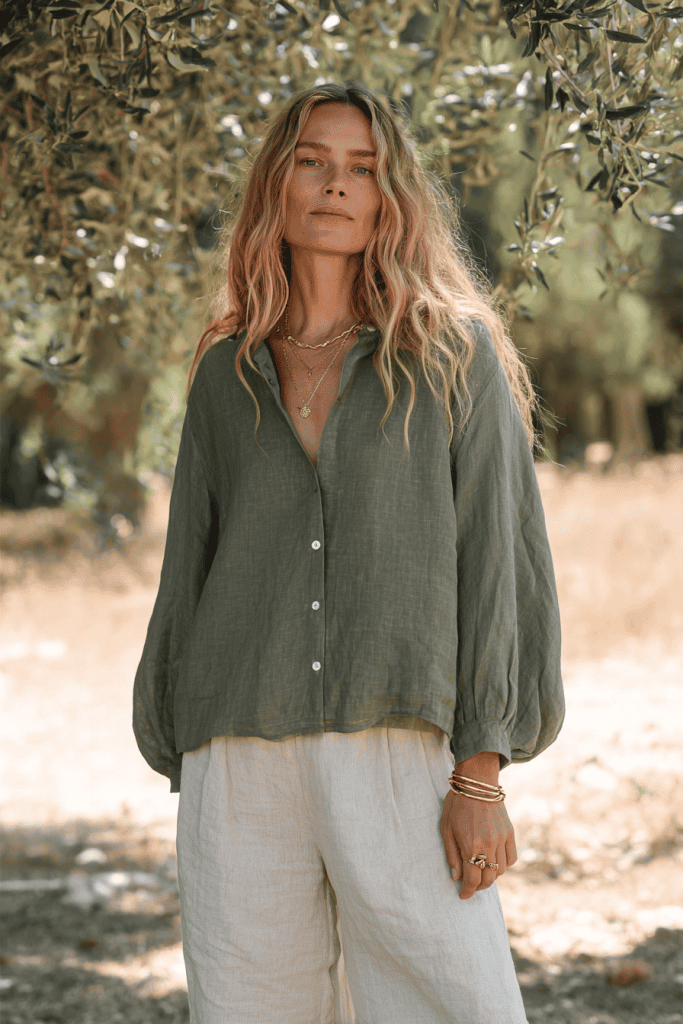
Once you can recognize polyester, the next step is choosing natural fibers with intention.
When you know what fabrics serve your comfort and values, shopping becomes more thoughtful and less overwhelming.
Start with the clothes you wear most. Everyday basics (t-shirts, pajamas, undergarments) are a great place to begin.
Choose cotton for softness and breathability, or linen for structure and cool comfort.
Over time, you’ll notice the difference: natural fibers move with your body, regulate temperature, and simply feel more at ease.
When buying new pieces, pause for a quick label check. Look for 100% natural fiber when possible, or blends where natural fibers make up the majority.
Phrases like organic cotton, pure linen, or hemp blend usually signal materials that age gracefully and stay comfortable through many washes.
Natural fibers also invite longevity. They resist pilling, absorb dye beautifully, and can be repaired when worn.
Choosing them means investing in clothing that supports daily life instead of working against it.
Building a Natural-Fiber Wardrobe
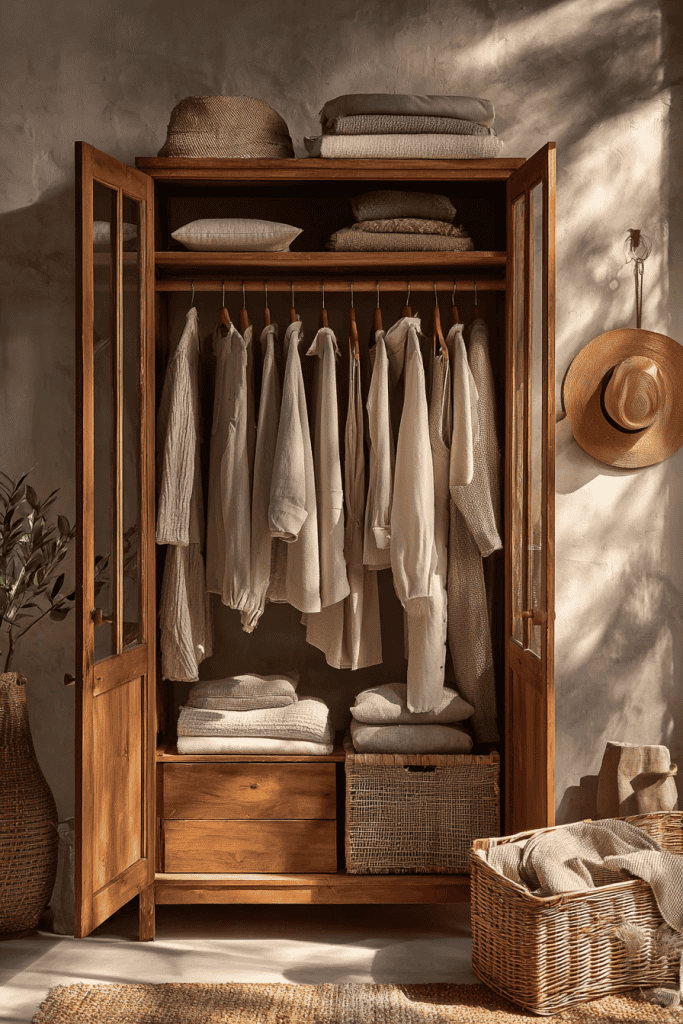
A natural-fiber wardrobe builds slowly, with purpose and observation.
Here’s how to create a wardrobe that feels breathable, lasting, and aligned with everyday living.
1. Start with What You Wear Most
Look at your daily rotation – tees, jeans, sleepwear, undergarments.
Replace synthetic-heavy pieces with cotton, linen, or hemp alternatives as they wear out.
These fabrics breathe better and hold their shape through regular washing.
2. Choose Quality Over Quantity
Select fewer, better-made pieces.
Natural fibers often cost a little more, but they reward you with durability and comfort.
A single well-constructed cotton shirt can outlast several synthetic ones.
3. Learn to Identify Natural Weaves
Natural fibers often have subtle variations – tiny slubs, gentle irregularities, or a matte finish.
Fabrics that look overly smooth or shiny may contain synthetics.
Over time, your hands will learn to recognize the difference by touch alone.
4. Explore Secondhand and Vintage
Thrift stores and vintage shops are excellent places to find 100% cotton, wool, or linen garments made before polyester blends became widespread.
Older fabrics often have richer texture and stronger stitching.
5. Support Transparent Brands
Look for brands that clearly list their materials and prioritize natural fabrics.
Labels that state 100% linen or GOTS-certified organic cotton show transparency and commitment to quality.
6. Focus on Everyday Comfort
Build from the inside out – choose natural-fiber items that touch your skin first.
Undergarments, sleepwear, and everyday tops are where comfort matters most.
From there, expand outward to layers and outerwear.
7. Care Intentionally
Natural fibers respond well to mindful care.
Use gentle detergents, wash in cool water, and line dry when possible.
These small habits extend a garment’s life and preserve its natural texture.
8. Replace Gradually
There’s no rush to overhaul your closet.
Let it evolve naturally as you learn which fabrics feel best.
Each thoughtful purchase strengthens your connection to what you wear and how it supports your daily rhythm.
The Joy of Knowing What You Wear
Reading fabric labels is a simple skill, yet it reshapes how you see your wardrobe.
It turns shopping into a thoughtful act and brings awareness to the textures that move with you every day.
When you understand what your clothes are made of, you buy with confidence, wear them longer, and care for them better.
Every time you pause to check a label, you practice awareness. You make a choice rooted in knowledge and care rather than habit.
That kind of attention carries into other parts of life – how you clean, rest, cook, and live.
What fabrics do you reach for most? Have you noticed a difference when wearing natural fibers?
Share your thoughts or questions in the comments below – your experiences may help someone else begin their own mindful wardrobe journey.
FAQs
1. How can I tell if a fabric is truly 100% natural?
Check the fiber list on the label – it should list only one material, such as 100% cotton or 100% linen.
Blends that include polyester, nylon, or elastane mean it’s mixed with synthetics.
Over time, you’ll also recognize natural fabrics by touch – soft, breathable, and slightly irregular in texture.
2. Are small amounts of polyester okay in a blend?
Yes. A small percentage of polyester (like 5–10%) can improve durability or elasticity in garments such as jeans or fitted tops.
The key is balance – choose blends where natural fibers are the majority so breathability and comfort remain.
3. Do natural fabrics require special care?
Not necessarily. Most natural fibers prefer gentle washing in cool water and air drying.
Using mild detergent preserves their softness and color.
Avoid high heat, which can weaken fibers like silk or shrink wool.
4. Is viscose a natural or synthetic fabric?
Viscose (or rayon) is semi-synthetic – it’s made from plant cellulose but processed through chemical treatment.
It’s softer and more breathable than pure synthetics, making it a moderate choice if you’re transitioning toward natural fibers.
5. How can I start replacing synthetic clothing without wasting what I have?
Begin slowly. Wear and care for what you already own, and replace pieces only as they wear out.
When buying new, choose natural fabrics first for basics like tees, socks, or bedding.
This gradual shift keeps the process sustainable and practical.

